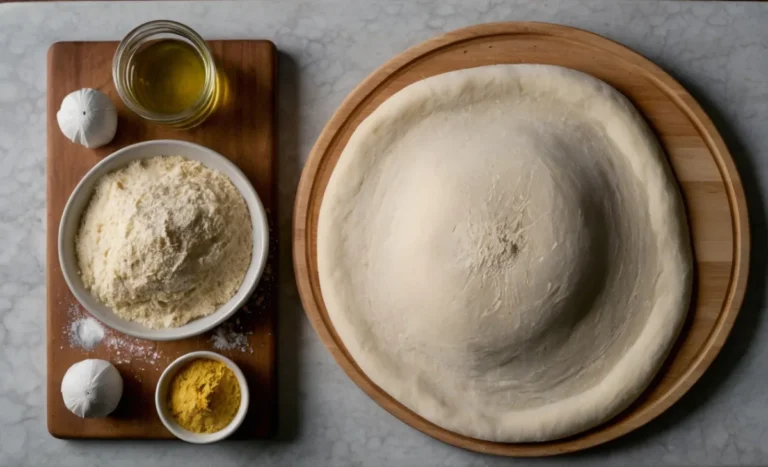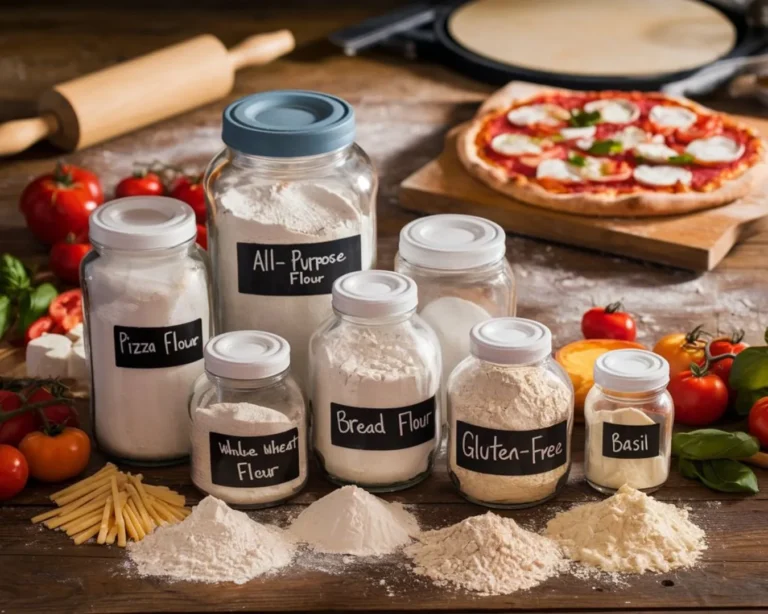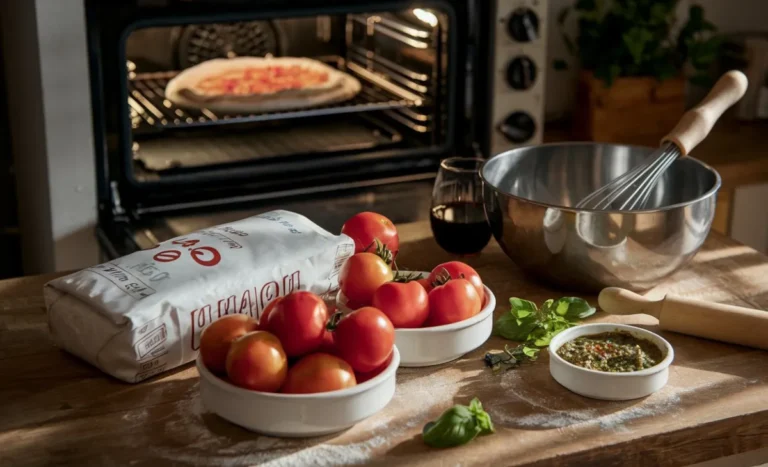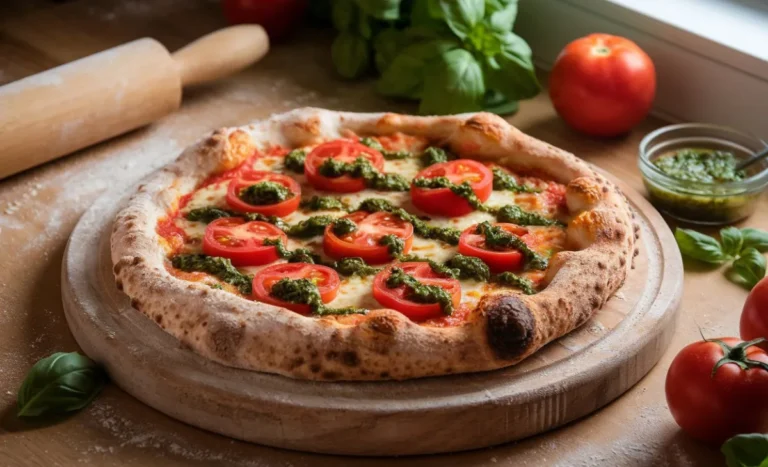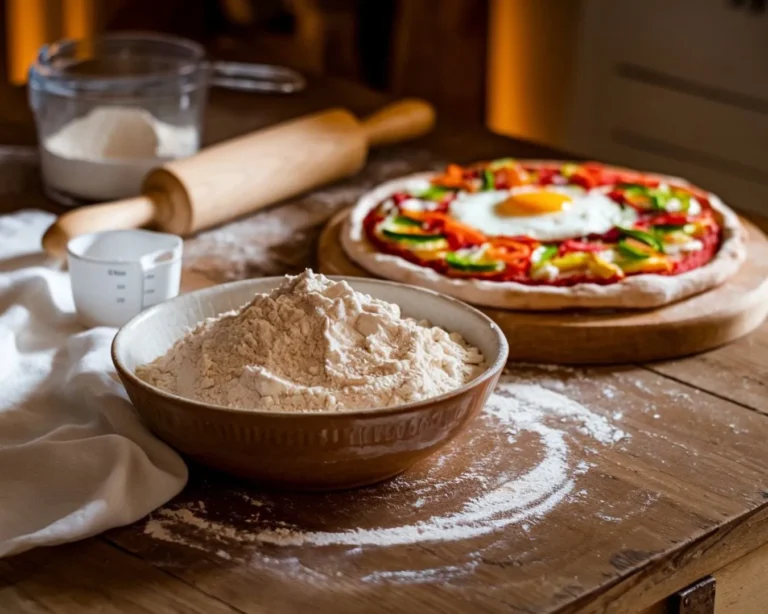Pizza Flour 101: Everything You Need to Know for Baking Delicious Pizzas
Understanding the Basics of Pizza Flour
Understanding the basics of pizza flour is essential for anyone looking to bake delicious pizzas at home. Pizza flour plays a crucial role in achieving that perfect crust, which is the foundation of a great pizza. This flour is specifically milled for high-gluten content, which contributes to the elasticity and strength of the dough. When you choose the right pizza flour, you set yourself up for success in the kitchen.
There are different types of pizza flour available, and each serves a unique purpose. For example, 00 flour is an Italian staple known for its fine texture and high protein content. This type of flour is ideal for Neapolitan-style pizzas, as it creates a light and airy crust. On the other hand, bread flour has a higher protein level than all-purpose flour, making it suitable for creating a chewy crust. Understanding these differences will help you select the best flour for your desired pizza style.
Another important aspect of pizza flour is its hydration level. Flour with a higher protein content can absorb more water, resulting in a dough that is easier to stretch and shape. Moreover, a well-hydrated dough can develop better gluten structure, which contributes to a more flavorful crust. This process also enhances the browning of the crust during baking, giving it that appealing golden hue. Therefore, knowing how hydration affects your dough can make a significant difference in your pizza-making journey.
In summary, mastering the basics of pizza flour is essential for any aspiring pizzaiolo. By understanding the types of flour available, their protein content, and how hydration influences dough texture, you will be well-equipped to create mouthwatering pizzas. Ultimately, the right pizza flour can elevate your homemade pizza to a restaurant-quality dish that will impress family and friends alike.
The Role of Protein Content in Pizza Dough
The role of protein content in pizza dough is crucial for achieving the ideal crust. Pizza flour is specifically milled to contain a higher protein percentage, typically ranging from 10% to 14%. This protein contributes to gluten development, which gives the dough its elasticity and strength. When water is added to the flour, proteins combine to form gluten, allowing the dough to stretch without tearing. This characteristic is essential for creating that perfect pizza base.
Higher protein content is particularly important for specific styles of pizza. For example, Neapolitan pizza benefits from flour with about 11-12% protein. This flour produces a soft and chewy crust that is both airy and flavorful. In contrast, if you prefer a thicker, more substantial crust, you might opt for bread flour with higher protein content. This type of flour creates a denser dough that holds up well to various toppings, ensuring your pizza maintains its structure during baking.
Additionally, protein content influences how the dough reacts during fermentation. The more protein present, the better the dough can rise, resulting in a light and airy texture. This fermentation process allows flavors to develop, enhancing the overall taste of the pizza. Consequently, understanding the role of protein in pizza flour can help you make informed choices about which type of flour to use for your desired pizza style.
In summary, protein content in pizza flour significantly affects the quality of your pizza dough. It determines the elasticity, texture, and overall flavor of the crust. By choosing the right flour with the appropriate protein level, you can create delicious pizzas that rival those from your favorite pizzeria. Ultimately, mastering this aspect of pizza-making will elevate your culinary skills and delight your taste buds.
Different Types of Pizza Flour: A Comparison
When it comes to baking delicious pizzas, understanding the different types of pizza flour is essential. Pizza flour is not a one-size-fits-all ingredient; rather, it varies significantly in terms of texture and protein content. The type of flour you choose directly influences the crust’s texture, flavor, and overall quality. By familiarizing yourself with the options, you can create the perfect pizza tailored to your preferences.
One of the most popular types of pizza flour is 00 flour, which is finely milled and often used in traditional Neapolitan pizzas. This flour typically has a protein content of around 11-12%. As a result, it produces a soft, chewy crust with a light, airy texture. Many pizza enthusiasts appreciate how 00 flour allows for easy stretching and shaping, making it a favorite for authentic Italian-style pizzas. Transitioning to a different style, bread flour offers a higher protein content, usually ranging from 12-14%. This flour creates a denser, chewier crust, making it an excellent choice for New York-style pizzas.
Another option is all-purpose flour, which contains moderate protein levels (about 10-12%). While it can be used for pizza dough, it may not yield the same texture as 00 flour or bread flour. However, all-purpose flour is versatile and suitable for various recipes. If you are experimenting with homemade pizza, all-purpose flour can be a convenient choice. Lastly, some pizza makers opt for whole wheat flour, which offers a nuttier flavor and added nutrition. This flour has a lower protein content and can create a denser crust, but it pairs well with specific toppings.
In summary, knowing the differences between types of pizza flour is vital for achieving your desired crust quality. Each type offers unique characteristics that can enhance your pizza experience. Whether you prefer the airy texture of 00 flour, the chewiness of bread flour, or the versatility of all-purpose flour, the right choice can elevate your homemade pizza. Ultimately, understanding these distinctions will lead to more delicious and satisfying pizza creations.
Choosing the Right Pizza Flour for Your Recipe
Choosing the right pizza flour for your recipe is essential for creating delicious, restaurant-quality pizzas at home. Pizza flour plays a crucial role in determining the texture and flavor of your crust. With various options available, understanding their differences can help you make the best choice for your specific pizza style. Whether you’re aiming for a light and airy Neapolitan pizza or a chewy New York-style slice, selecting the right flour can make all the difference.
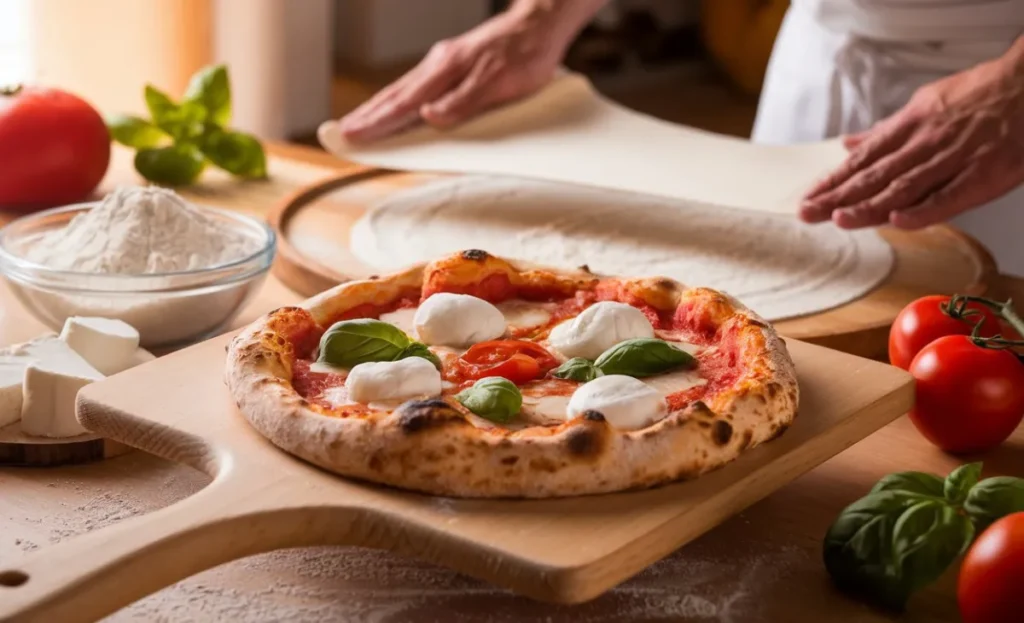
Step-by-Step Instructions for Choosing Pizza Flour
- Identify Your Pizza Style: First, determine the type of pizza you want to make. For a classic Neapolitan pizza, opt for 00 flour, which provides that perfect airy crust. If you prefer a thicker crust like a New York-style pizza, choose bread flour.
- Check Protein Content: Next, examine the protein content of the flour. High-protein flours (12-14%) are great for chewy textures, while lower-protein options (10-11%) work well for softer, tender crusts.
- Consider Flavor: Think about the flavor profile you want to achieve. Whole wheat flour adds a nutty taste and more nutrients, making it a healthier option. However, it can create a denser crust, so consider mixing it with all-purpose flour for balance.
- Experiment and Adjust: Finally, don’t hesitate to experiment! Mix different flours to find the perfect combination for your taste. For instance, a blend of 00 flour and bread flour can provide both chewiness and airiness, enhancing your pizza experience.
Ingredients
- Flour Type: Choose from the following based on your pizza style:
- 00 Flour (for Neapolitan): 2 cups
- Bread Flour (for New York-style): 2 cups
- All-Purpose Flour: 2 cups
- Whole Wheat Flour: 1 cup (optional)
- Water: 1 cup (warm)
- Yeast: 1 packet (2 ¼ teaspoons)
- Salt: 1 teaspoon
- Olive Oil: 2 tablespoons (optional)
By understanding these factors, you can choose the right pizza flour to achieve the perfect crust. Remember, the quality of your pizza flour significantly influences the final product. Happy pizza-making!
Essential Ingredients for Perfect Pizza Crusts
When it comes to baking delicious pizzas, understanding the essential ingredients for perfect pizza crusts is crucial. Among these, pizza flour stands out as the primary component. The type of flour you choose significantly impacts the texture and flavor of your crust. For instance, high-protein flour provides the necessary strength and elasticity, allowing for a chewy and airy crust that’s characteristic of traditional pizzas.
In addition to flour, water plays a vital role in the dough’s development. The right temperature and quality of water can enhance the dough’s performance. Ideally, use filtered water at a lukewarm temperature to activate the yeast effectively. Moreover, proper hydration levels will ensure that the dough is manageable and easy to shape, leading to a better overall crust.
Yeast is another essential ingredient that helps the dough rise and develop flavor. Active dry yeast or instant yeast are both excellent options. When combined with warm water and sugar, yeast ferments, producing carbon dioxide bubbles that create a light and airy crust. Allowing the dough to rise adequately is critical, as it contributes to the crust’s texture and taste.
Finally, don’t overlook the importance of salt. It not only enhances flavor but also strengthens the gluten structure in the dough. Salt helps to control fermentation, ensuring that the yeast works effectively without overwhelming the dough. With these essential ingredients—pizza flour, water, yeast, and salt—you’ll be well on your way to creating the perfect pizza crust that will impress your family and friends!
Common Mistakes to Avoid When Using Pizza Flour
When it comes to baking delicious pizzas, understanding pizza flour is essential. However, many home bakers make common mistakes that can hinder their results. By avoiding these pitfalls, you can elevate your pizza-making skills and achieve a perfect crust every time. First and foremost, many people underestimate the importance of flour type. Choosing the right pizza flour significantly affects your dough’s texture and flavor. Always opt for high-protein flour, which provides strength and chewiness, creating a delightful crust.
Another frequent mistake is improper measuring of ingredients. Baking is a science, and accuracy is crucial. Using too much or too little pizza flour can lead to dry or overly sticky dough. To avoid this issue, use a kitchen scale to weigh your flour. Additionally, spooning flour directly into a measuring cup can introduce air, resulting in inconsistencies. Instead, scoop the flour into the cup and level it off for a precise measurement.
Not paying attention to hydration levels is another common error. Each type of pizza flour absorbs water differently, affecting dough consistency. Failing to adjust your water ratio can lead to overly wet or dry dough. To find the right balance, start with the recommended hydration percentage for your specific flour and adjust as necessary. This step ensures a manageable dough that rises beautifully.
Lastly, many home bakers neglect the resting period for their dough. Allowing the dough to rest is crucial for gluten development and achieving the desired texture. Skipping this step can result in tough, unyielding crusts. To ensure a tender and chewy pizza crust, let your dough rest for at least 30 minutes before shaping. By avoiding these common mistakes, you’ll be well on your way to baking delicious pizzas with perfectly crafted crusts!
Tips for Storing and Handling Pizza Flour Properly
Storing and handling pizza flour properly is essential for achieving the best results in your pizza-making endeavors. Improper storage can lead to flour spoilage, affecting your dough’s texture and flavor. First, always keep your pizza flour in an airtight container. This method protects it from moisture, pests, and contaminants. A cool, dark place, such as a pantry or cupboard, is ideal for maintaining its quality.
Another tip is to label your flour container with the purchase date. Flour has a shelf life of about six to twelve months, depending on the type. By tracking the date, you can ensure you’re using fresh ingredients for your pizzas. If you have large quantities of pizza flour, consider freezing it for long-term storage. Freezing can extend its shelf life while preserving flavor and quality. Just remember to bring the flour back to room temperature before using it.
When handling pizza flour, it’s essential to keep your workspace clean. Flour can attract moisture and bacteria, which may compromise its quality. Always wash your hands and utensils before handling flour, and clean any surfaces thoroughly. Additionally, try to minimize exposure to air. The more air your flour encounters, the faster it can degrade. Work quickly and efficiently to maintain freshness.
Finally, be mindful of how you measure your pizza flour. Instead of scooping directly from the container, use a spoon to transfer flour into a measuring cup. This method prevents compaction, ensuring accurate measurements. Accurate measurements are crucial for consistent dough results. By following these tips for storing and handling pizza flour properly, you’ll be set up for success in creating delicious pizzas every time!
How to Make Authentic Italian Pizza at Home: Understanding Pizza Flour


